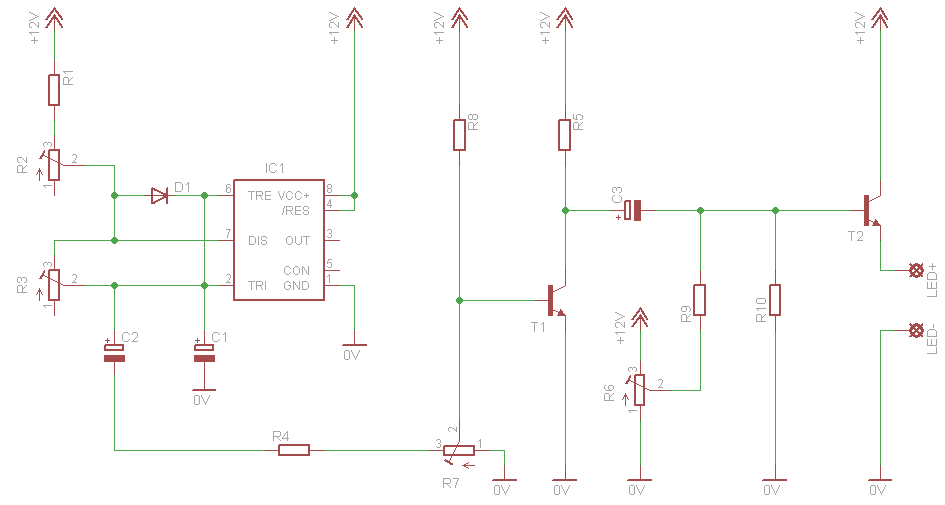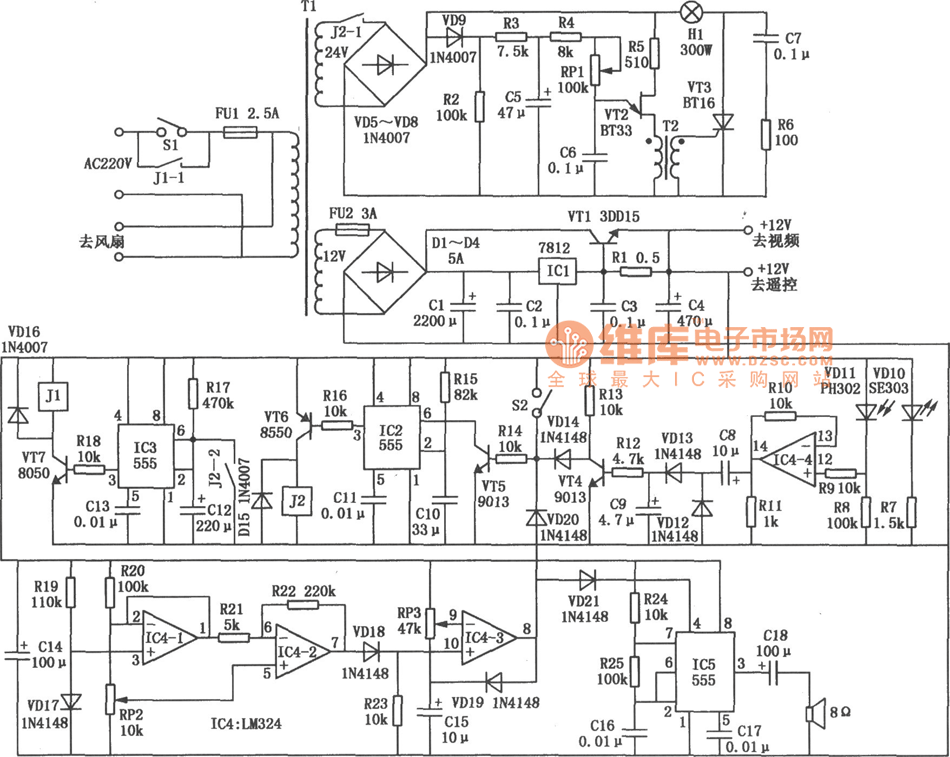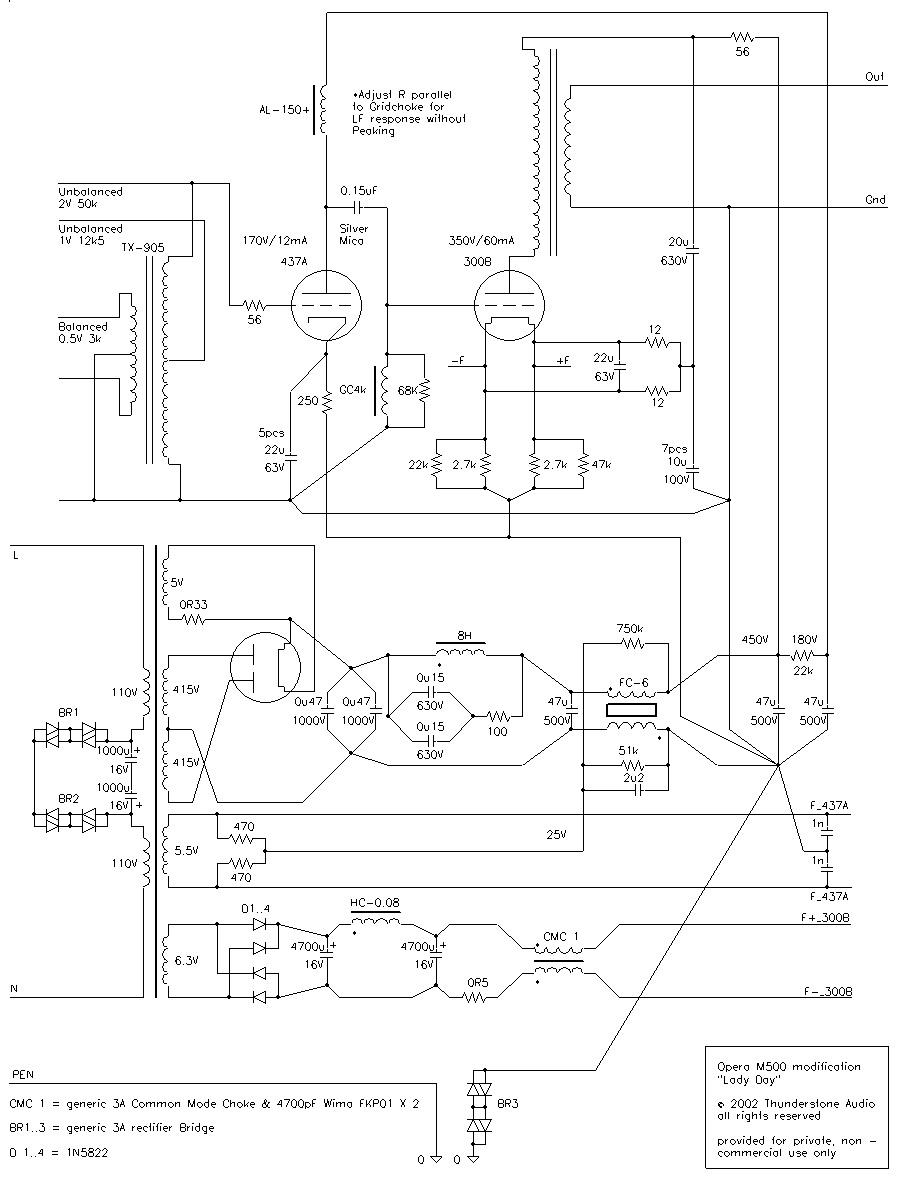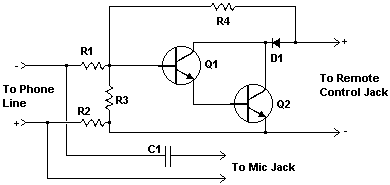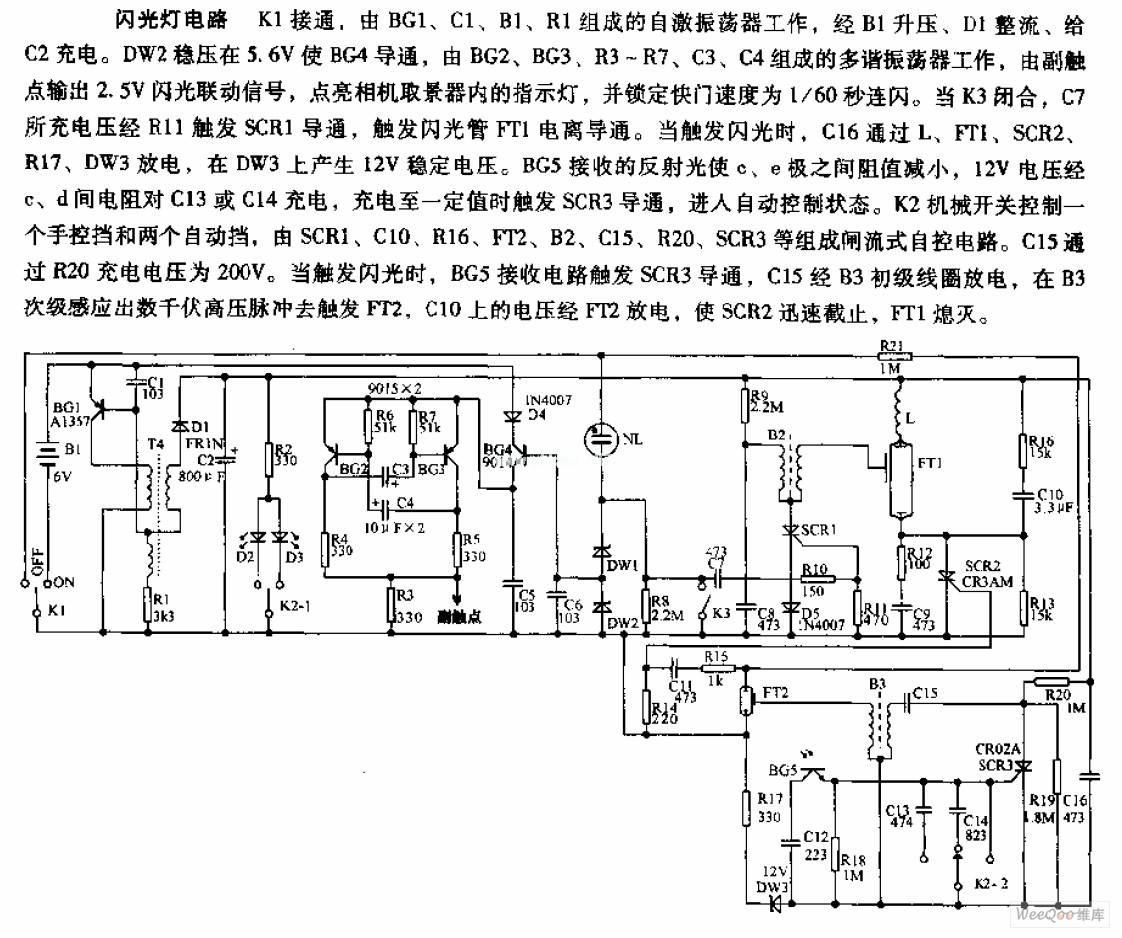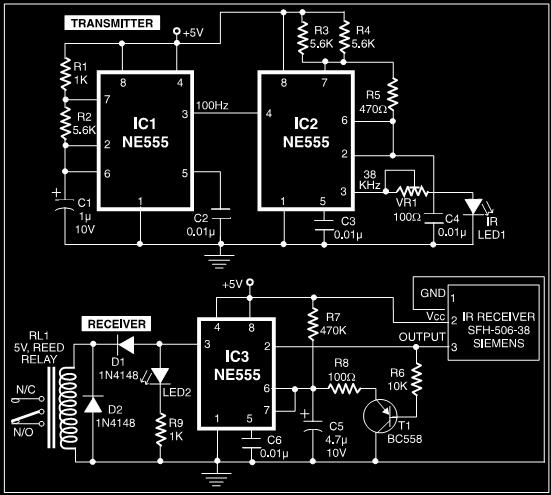
The TL494 Datasheet and Pulse Width Modulated Step-Down Converter Circuit Schematic

The circuit illustrates a TL494 pulse width modulated step-down converter schematic. This circuit allows for testing of line regulation, load regulation, output ripple, short circuit current, and efficiency under various input voltage conditions. A detailed table of these tests is provided in the TL494 datasheet.
The TL494 is a versatile integrated circuit commonly used in switch-mode power supplies and DC-DC converters. In this step-down converter configuration, the TL494 operates as a pulse width modulation (PWM) controller, regulating the output voltage by adjusting the duty cycle of the switching signal.
The circuit typically consists of the TL494 IC, a power MOSFET, an inductor, a diode, and several passive components such as resistors and capacitors. The inductor stores energy during the "on" phase of the PWM signal and releases it to the load during the "off" phase, allowing for efficient voltage regulation.
To evaluate the performance of the step-down converter, several tests can be conducted:
1. **Line Regulation:** This measures how well the output voltage remains constant despite variations in the input voltage. It is essential for ensuring stable operation in varying conditions.
2. **Load Regulation:** This test assesses the output voltage stability when the load current changes. Good load regulation indicates that the converter can maintain output voltage even with fluctuating load demands.
3. **Output Ripple:** This refers to the small, unwanted AC voltage superimposed on the DC output voltage. Measuring the output ripple is crucial for applications that require a clean and stable DC supply.
4. **Short Circuit Current:** This test determines the maximum current the converter can provide under short-circuit conditions. It is vital for assessing the safety and reliability of the circuit.
5. **Efficiency Test:** Efficiency is calculated by comparing the output power to the input power. High efficiency is desirable as it minimizes energy loss and heat generation.
These parameters can be evaluated under different input voltage conditions, providing a comprehensive overview of the converter's performance. The TL494 datasheet contains detailed tables and specifications that aid in understanding the expected performance metrics and assist in troubleshooting and optimizing the circuit design.The circuit shows TL494 Pulse Width Modulated Step?Down Converter Circuit Schematic. With this circuit you can have circuit test such Line Regulation, Load Regulation, Output Ripple, Short Circuit Current and Efficiency test with various Vin conditions. Detailed table of these tests are given in the TL494 datasheet. 🔗 External reference
The TL494 is a versatile integrated circuit commonly used in switch-mode power supplies and DC-DC converters. In this step-down converter configuration, the TL494 operates as a pulse width modulation (PWM) controller, regulating the output voltage by adjusting the duty cycle of the switching signal.
The circuit typically consists of the TL494 IC, a power MOSFET, an inductor, a diode, and several passive components such as resistors and capacitors. The inductor stores energy during the "on" phase of the PWM signal and releases it to the load during the "off" phase, allowing for efficient voltage regulation.
To evaluate the performance of the step-down converter, several tests can be conducted:
1. **Line Regulation:** This measures how well the output voltage remains constant despite variations in the input voltage. It is essential for ensuring stable operation in varying conditions.
2. **Load Regulation:** This test assesses the output voltage stability when the load current changes. Good load regulation indicates that the converter can maintain output voltage even with fluctuating load demands.
3. **Output Ripple:** This refers to the small, unwanted AC voltage superimposed on the DC output voltage. Measuring the output ripple is crucial for applications that require a clean and stable DC supply.
4. **Short Circuit Current:** This test determines the maximum current the converter can provide under short-circuit conditions. It is vital for assessing the safety and reliability of the circuit.
5. **Efficiency Test:** Efficiency is calculated by comparing the output power to the input power. High efficiency is desirable as it minimizes energy loss and heat generation.
These parameters can be evaluated under different input voltage conditions, providing a comprehensive overview of the converter's performance. The TL494 datasheet contains detailed tables and specifications that aid in understanding the expected performance metrics and assist in troubleshooting and optimizing the circuit design.The circuit shows TL494 Pulse Width Modulated Step?Down Converter Circuit Schematic. With this circuit you can have circuit test such Line Regulation, Load Regulation, Output Ripple, Short Circuit Current and Efficiency test with various Vin conditions. Detailed table of these tests are given in the TL494 datasheet. 🔗 External reference
